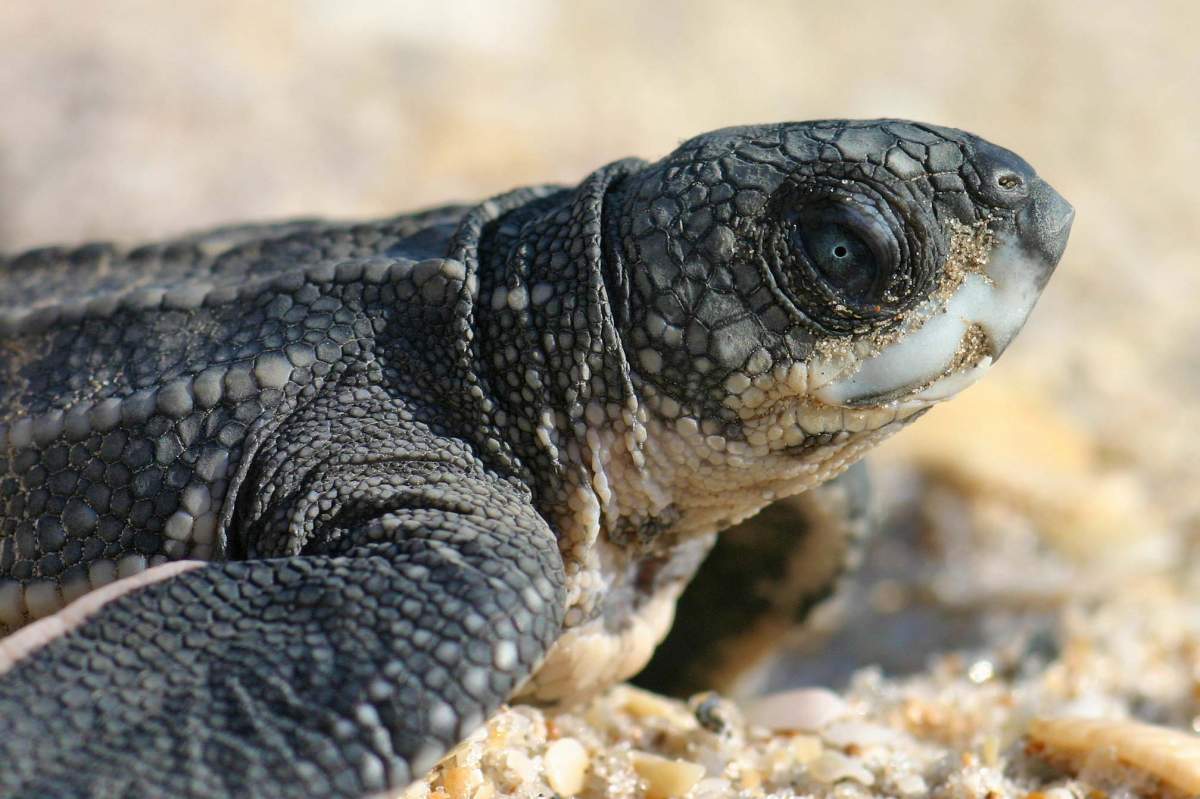
Body Heat
Growing to a length of up to 6.5 feet--about the length of a Volkswagen bug--and weighing in at as much as fourteen hundred pounds, the Leatherback is the largest sea turtle on earth. Leatherbacks can be found in various parts of the world, laying their eggs on tropical beaches off the Atlantic, Pacific and Indian Oceans.
The Leatherback is special because unlike any other sea turtle it can survive in cold waters. A thick, oily layer of fat under their skin helps insulate them so that their body temperature remains warmer than the water around them. What helps, too, is that they're large in size, have high metabolisms for turtles and are able to temporarily turn off the blood flow to cold flippers, keeping their blood warm.
Temperature and Sex
But more interesting perhaps is the role temperature plays in the outcome of the sex of the hatchlings of not just Leatherback turtles, but all sea turtles. Females lay an average of 100 eggs at a time, burying them in pits in the sand. The incubation temperature not only determines whether any of the eggs survive in the first place, but also directly determines the outcome of the sex of the turtles. At about 85 degrees Fahrenheit, roughly half the hatchlings will be male, half female. If the temperature is slightly under 85, most, if not all, the hatchlings will be male. If above 85, most or all of the hatchlings will be female. Prolonged exposure to a temperature 95 degrees and higher or 77 and lower, though, and the eggs will not survive.
Read More:
"Leathback Sea Turtle" (Bagheera)









